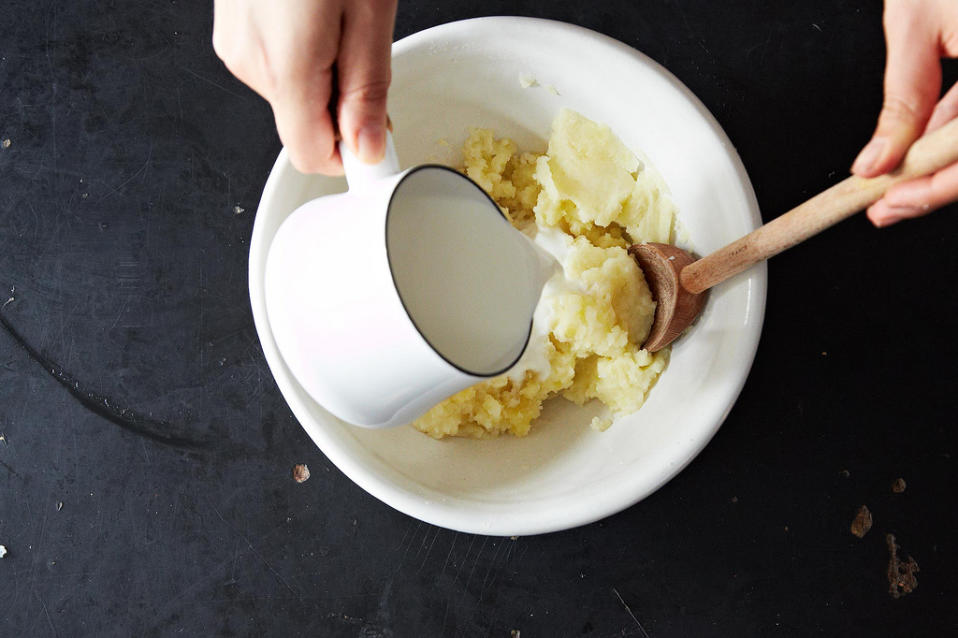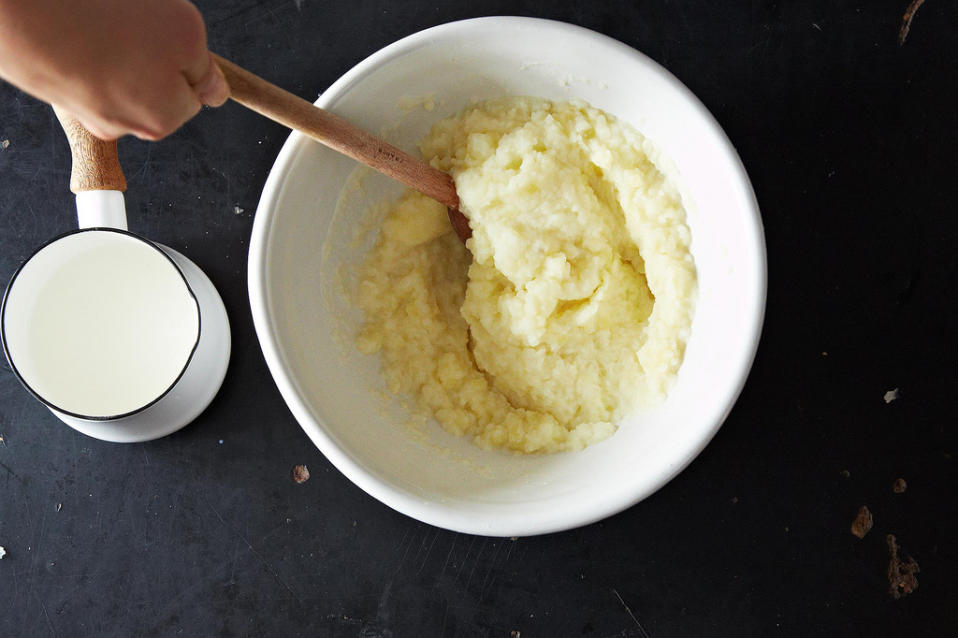Mashed Potato Strategies
Inspired by conversations on the Food52 Hotline, we're sharing tips and tricks that make navigating all of our kitchens easier and more fun.
Today: Mashed potatoes are the glue that holds any feast together -- we'd just rather they didn't taste like glue.
People have strong opinions about mashed potatoes. Why? Because they can go so terribly wrong -- and become a gummy, mortar-like substance. Jeffrey Steingarten even devotes an entire chapter in The Man Who Ate Everything to mashing the tuber, and Joël Robuchon won a Michelin star for his take on the traditional mash. You should approach potatoes with a clear and deliberate plan, depending on if you desire a fluffier or more rustic end result. If smooth potatoes are the goal, then smooth potatoes you shall have. There will be no comments from that picky guest: "What's this? A lump I see in my mash?"
>>RELATED: 11 Exciting Potato Recipes
Not all potatoes enter into the mashing race on equal footing: Which type should you use? The starch content varies depending on type of potato; we recommend going with Russets.
The Science Behind the Mash
Think all the way back to your high school biology class, specifically the part where you learned about how cells break down. Jog your memory, now apply that information your potatoes -- it's all about the starch vs. water content. We need to strategically combat the potato's starchiness; both overcooking and undercooking will result in gummy potatoes.
>>RELATED: 13 Seasonal Sweet Potato Recipes to Eat All Day Long
Cooking Your Potatoes
The least labor-intensive strategy is cooking the potatoes with the skins on, as it prevents absorbtion of water by the starch molecules. (Just make sure to scrub the skins, first.) Instead of boiling, which allows the potatoes to absorb liquid, we steam the potatoes in an inch of water. The time will vary depending on the quantity of potatoes -- somewhere between 20 to 30 minutes. Test for doneness with a knife; it should slice through without difficulty, and the potatoes should remain intact. Now, peel the potatoes -- it will be easier than peeling when the potatoes are raw. After peeling, return potatoes to the warm pan and allow the remaining water to evaporate.
>>RELATED: Francis Mallmann's Potato Dominoes
If you are going to peel the potatoes before cooking, be sure to wash off the extra starch, evident when the stream is clear.


Our biggest caveat after thorough research is to keep all electronic appliances away from your mashed potatoes. Old school is the way to go.
The Easiest Route to Fluffy Potatoes
Cook's Illustrated recommends using a ricer or a food mill in order to reach the top level of lightness. When using a ricer, simply push the potatoes through the ricer in small pieces and stir in your added ingredients.
After using the ricer or food mill, keep the potatoes warm! Use warmed milk, cream, or half and half and tabs of butter. Add the milk slowly, and be careful not to overdo it. Now is the time to salt; you'd be surpised how much salt you can add before you start to taste it.
For Slightly More Textured Potatoes
A handheld potato masher is the tool of choice for this; a masher that breaks the potatoes up into smaller chunks will work better than a traditional wire masher. Keep potatoes warm, add your warmed milk, chilled butter and salt, and get to mashing. Do not overdo it -- or you will enter the glue stage.
Reheating Strategies
A crock pot can serve as an excellent warming vehicle before your dinner. For reheating the next day, simply throw into a casserole dish, cover with foil, and reheat in a low oven until warm.
And of course, pour on gravy liberally.
Photos by James Ransom
This article originally appeared on Food52.com: Mashed Potato Strategies





